Categories
Latest Updates
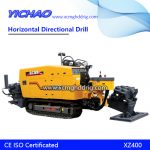
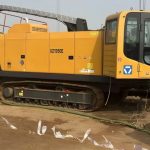
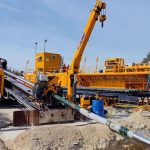
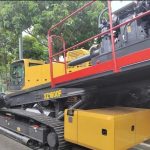
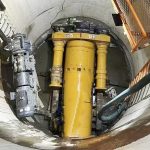
The mud used in the construction of horizontal directional drilling rigs in China is mainly composed of bentonite, which is easy to produce hole collapse and stuck drill problems, which causes the failure of horizontal directional drilling. Aiming at the reasons for failure in drilling, drawing on the drilling mud technology of the petroleum industry, combining the changeable surface soil conditions and on-site construction experience, a horizontal directional drilling mud formula was developed.
In the construction of horizontal directional drilling, people compare the mud to the blood being drilled. When the mud stops circulating, the drilling work cannot continue. With the improvement of mud technology, people’s understanding of the role and significance of mud has gradually improved. The role and status of mud have become more prominent, and mud has received more general attention.
1. Carrying and suspending drill cuttings. This is a basic function of mud, which is to take the rock (soil) debris broken by the drill bit (reamer) out of the hole to keep the hole clean.
2. Stabilize the hole wall. Stable and regular hole wall is an important basic condition for high-quality and fast drilling, and it is also the basic foothold of mud technical measures.
3. Cooling and flushing the drill bit, cleaning the rock (soil) debris in the hole (bottom). In addition, the specific gravity of mud can be adjusted in a relatively large range to establish a liquid column pressure that is balanced with the formation pressure to prevent leakage, collapse, jamming and other complex underground conditions.
In short, the mud type should be correctly selected according to the stratum characteristics, structure, drilling measures and other specific conditions of each stage of each drilling, and the corresponding reasonable mud measures should be determined to achieve the purpose of high-quality and fast drilling.
At present, the basic types of mud are: water-based mud, oil-based mud and gas-based mud.
1. Water-based mud uses water as the dispersion medium, and its basic components are clay, water and chemical treatment agents;
2. Oil-based mud is made up of diesel (or crude oil), asphalt (or organic earth) and related treatment agents;
3. Gas-based mud gas is produced by chemical methods, and the fluid is composed of two phases of gas and liquid or three phases of gas, liquid and solid.
According to our existing drilling rig performance and China’s geological conditions, we choose water-based mud with water as the dispersion medium and the basic components of clay, water and chemical treatment agents.
①Clay (bentonite)
The clay in the horizontal directional drilling mud is mainly composed of very fine (below 2 microns) clay mineral particles. They mainly contain silica, alumina and water, as well as a small amount of iron, alkali metals and alkaline earth metals. The chemical composition of clay minerals is hydrous aluminosilicate. There are many types of clay minerals, and there are only four common ones that are more important to the mud process: kaolinite, illite, montmorillonite and sepiolite. The clay in the horizontal directional drilling mud is bentonite (also called clay) mainly composed of montmorillonite.
②Chemical treatment agent
In order to ensure the stability of the horizontal directional drilling mud and improve the various process performance of the mud to meet the drilling requirements under various conditions, various chemical treatment agents (mud additives) are used in the mud. Commonly used chemical treatment agents (mud additives) for horizontal directional drilling mud include: A. Soda ash; B. Anti-collapse agent; C. Fluid loss agent; D. Flocculant; E. Lubricant; F. Tackifier
A. Soda Ash
Sodium carbonate (Na2CO3), also called soda. Soda ash is easy to ionize and hydrolyze in water. It is added during preparation to effectively improve the hydration and dispersion properties of clay. Therefore, adding a proper amount of soda ash can reduce the water loss of the mud and increase the viscosity and shear force.
B. Anti-collapse agent
Mainly include: potassium humate, asphalt powder, sulfonated asphalt powder, sulfonated phenolic resin, coal lye. Among them, bitumen powder has dual properties, can be used in water-based drilling fluids, can increase the lubricity of the mud cake, has an anti-sticking effect, can block the pores of the mud cake and adjust the cohesive force between the solid particles in the mud cake. Reduce fluid loss and anti-collapse effect.
C. Filtrate reducer
The fluid loss agent includes: sodium carboxymethyl cellulose (Na-CMC), polyacrylonitrile;
D. Flocculant:
The polymers we use are: polyacrylamide (PAM); polymers have three functions: flocculation, anti-collapse and shearing.
F. Lubricant:
Extreme pressure lubricants, stearates, sulfonated asphalt, etc. are used in horizontal directional drilling. Because the hydrophilic group of the lubricant molecule is adsorbed on the surface of the metal or clay, a strong chemical film is formed, so that the friction between the contact surfaces occurs between the lipophilic groups, which improves the lubricity of the mud, thereby reducing The friction force is reduced, the friction between the drilling tool and the mud is reduced, and the sticking of the drill can be prevented.
③Water
For the water in the mud, we choose to control the pH value of fresh water at 7-8.
① Selection of mud formula research plan
According to stratum characteristics, structure, drilling measures and other specific conditions, the mud formula research plan is divided into:
A. Conduct mud formulation research according to the characteristics, structure and soil classification of the stratum;
According to the actual situation of our current horizontal directional drilling, combined with the distribution of surface soil in China, according to the characteristics, structure and soil classification of the stratum. Choose universal mud formulations that are widely applicable to various regions and construction needs for research. The types of soil can be divided into:
a. Clay type; b. Sand type; c. Lime soil type; d. Weathered shale type; e. Gravel type; f. Silt type;
The above six types of soils are widely distributed on the surface of China (above 30m deep from the surface of the earth). They are the mud formulas that we have the most contact with during construction and need to be solved first;
② Mud performance requirements and composition of the clay layer
A. The geological characteristics of the clay layer: coarse soil, loose geological structure, sand, alluvial sand layer, planting soil, backfill soil, etc., silt soil and silt. The fine soil structure is harder and has strong water absorption, among which yellow mudstone and brown mudstone are the most representative.
B. Its main features: good hole formation, good drillability, drill tool rotation in the soil, deflection and excavation can be better hole formation, not easy to collapse, is the most suitable stratum to traverse.
c. Clay layer slurry performance requirements:
Density, viscosity, shear force, PH value, water loss (medium pressure), mud cake
1.05-1.07 35-40″ 0-2/2-6 8.5-9 4-7ml 1.0-1.2
d. The composition of mud:
Bentonite + Soda Ash + Fluid Loss Agent + Lubricant
Mixing ratio of mud (Kg/m3):
1: 0.04: 0.06 :0.06
Under general conditions, use the above mix ratio; during construction, appropriate adjustments should be made according to the actual situation on site.
③Mud performance requirements and composition of sand layer and fine sand, pebbles, gravel (a small amount) formation
A. The geological structure characteristics of the sand layer: a small amount of clay or silty soil is mixed with a large amount of yellow sand, which also contains a certain amount of pebbles and a small amount of gravel.
B. Its main characteristics: general porosity, easy to collapse, easy to leak, and strong water absorption capacity. The pilot hole and the re-expansion hole are easy to collapse, and the high sand content of the mud causes repeated crushing of the cuttings by the equipment, and the equipment and equipment are worn out.
c. Sand mud performance requirements:
Density Viscosity Water loss (medium pressure) PH value Mud cake Shear force
1.05 50-65″ 4-5ml 8.5-9 1.5 2-4/4-8
K≥11 (increasing the K value is beneficial to preventing leakage and collapse. The most direct way to increase the K value in the field of directional drilling is to add bentonite or polymer (such as universal king or universal king, etc.);
n≤0.55 (reducing the value of n is conducive to carrying cuttings and washing holes);
t0 dynamic shear force≥15 (yield value, dyne/cm2)
d. Composition of mud:
Bentonite (high content) + anti-collapse agent (polymer, appropriate concentration) + lubricant
e. The mixing ratio of mud (Kg/m3):
1:0.05:0.06
Under general conditions, the above mix ratio can be used; during construction, appropriate adjustments should be made according to the actual situation on the site.
④Mud performance requirements and composition of sand layer and fine sand, pebbles, gravel (a small amount) formation
A. Geological structure characteristics: complete yellow sand, quicksand with high water content, including pebbles and gravel, this kind of formation is generally relatively small.
B. Its main features: extremely poor porosity, easy to collapse, easy to leak slurry, easy to cause a large section of the well wall to collapse, wrap or bury drilling tools or tools, slow drilling speed, serious wear of drilling tools and tools, and sand content in mud Large, repeated crushing of drilling tools and machinery is serious.
c. Mud performance requirements for pebble layer and gravel layer:
Density Viscosity Water loss (medium pressure) PH value Mud cake Shear force
1.05-1.10 60-70″ 4-5ml 8.5-9 1.5-2.0 2-6/6-10
K≥15 n =0.57-0.66 t0 =20
d. The composition of the mud:
Bentonite (high content) + anti-collapse agent (polymer) + fluid loss agent + lubricant
e. Mixing ratio of mud (Kg/m3):
1: 0.03: 0.04: 0.03
Under general conditions, the above mix ratio can be used; during construction, appropriate adjustments should be made according to the actual situation on the site.
